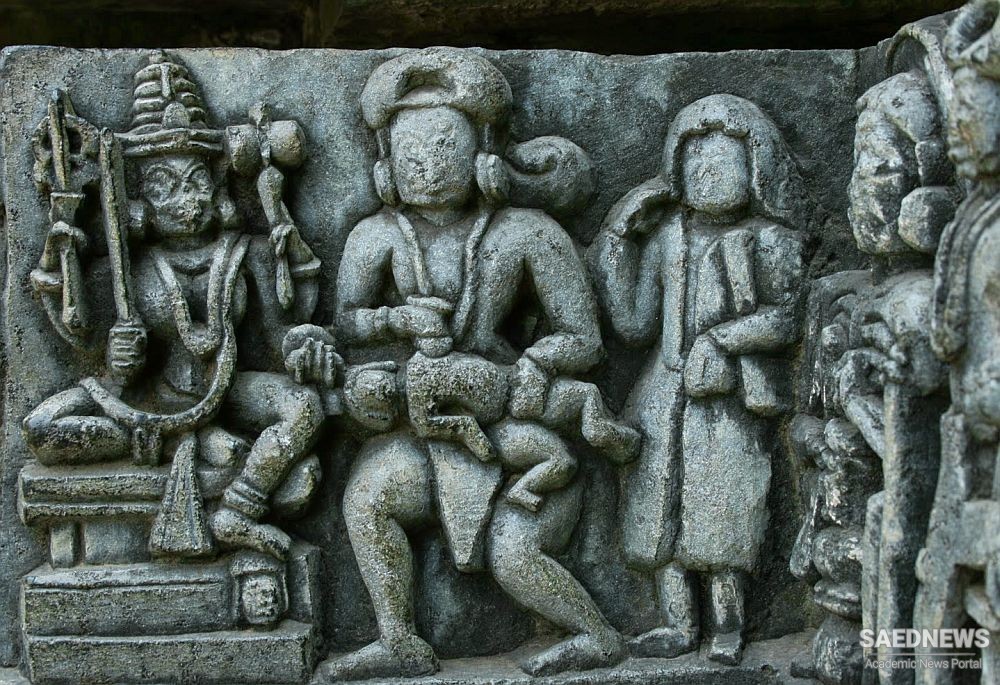In their cities of Ur, Erech and Kish, the Sumerians devised their cuneiform script, built the extraordinary temple-towers called ziggurats and evolved an impressive law, literature and mythology. Not long afterwards the region was invaded by the Semitic Akkadians, who had adopted the language and culture of Sumer. Later still, in about 2000 BCE, the Amorites had conquered this Sumerian-Akkadian civilisation and made Babylon their capital. Finally, some 500 years later, the Assyrians had settled in nearby Ashur and eventually conquered Babylon itself during the eighth century BCE.
This Babylonian tradition also affected the mythology and religion of Canaan, which would become the Promised Land of the ancient Israelites. Like other people in the ancient world, the Babylonians attributed their cultural achievements to the gods, who had revealed their own lifestyle to their mythical ancestors. Thus Babylon itself was supposed to be an image of heaven, with each one of its temples a replica of a celestial palace.
This link with the divine world was celebrated and perpetuated annually in the great New Year Festival, which had been firmly established by the seventeenth century BCE. Celebrated in the holy city of Babylon during the month of Nisan - our April - the Festival solemnly enthroned the king and established his reign for another year. Yet this political stability could only endure in so far as it participated in the more enduring and effective government of the gods, who had brought order out of primordial chaos when they had created the world.
The eleven sacred days of the Festival thus projected the participants outside profane time into the sacred and eternal world of the gods by means of ritual gestures. A scapegoat was killed to cancel the old, dying year; the public humiliation of the king and the enthronement of a carnival king in his place re-produced the original chaos; a mock-battle re-enacted the struggle of the gods against the forces of destruction.
These symbolic actions thus had a sacramental value; they enabled the people of Babylon to immerse themselves in the sacred power or mana on which their own great civilisation depended. Culture was felt to be a fragile achievement, which could always fall prey to the forces of disorder and disintegration. On the afternoon of the fourth day of Festival, priests and choristers filed into the Holy of Holies to recite the Enuma Elish, the epic poem which celebrated the victory of the gods over chaos. The story was not a factual account of the physical gins of life upon earth but was a deliberately symbolic attempt to suggest a great mystery and to release its sacred power.
A literal account of creation was impossible, since nobody had been present at these unimaginable events: myth and symbol were thus the only suitable way of describing them. A brief look at the Enuma Elish gives us some insight into the spirituality which gave birth to our own Creator God centuries later. Even though the biblical and Koranic account of creation would ultimately take a very different form, these strange myths never entirely disappeared but would re-enter the history of God at a much later date, clothed in a monotheistic idiom.
The story begins with the creation of the gods themselves - a theme which, as we shall see, would be very important in Jewish and Muslim mysticism. In the beginning, said the Enuma Elish, the gods emerged two by two from a formless, watery waste - a substance which was itself divine. In Babylonian myth - as later in the Bible - there was no creation out of nothing, an idea that was alien to the ancient world. Before either the gods or human beings existed, this sacred raw material had existed from all eternity.


 The Origin of the World and the Problem of God
The Origin of the World and the Problem of God














































